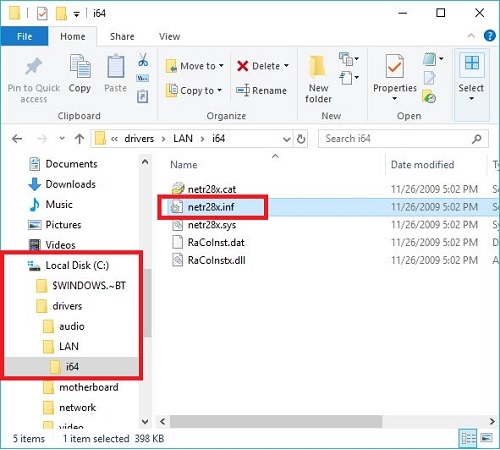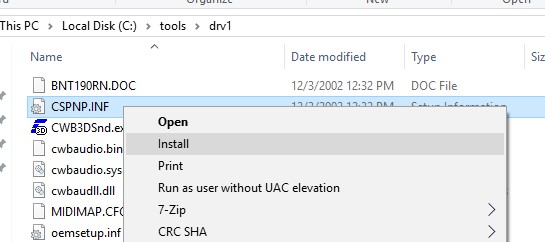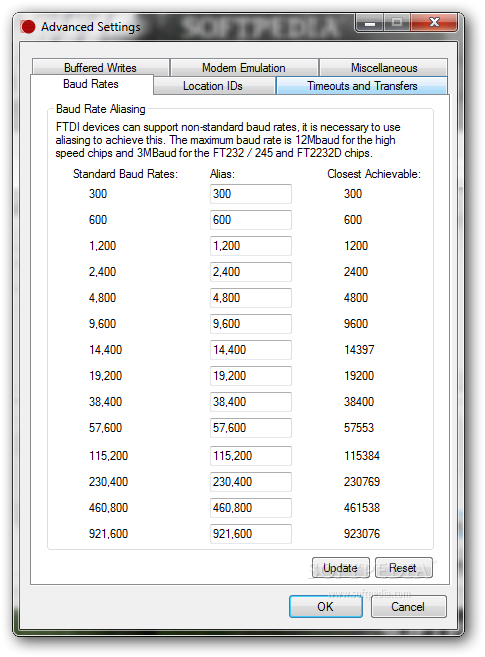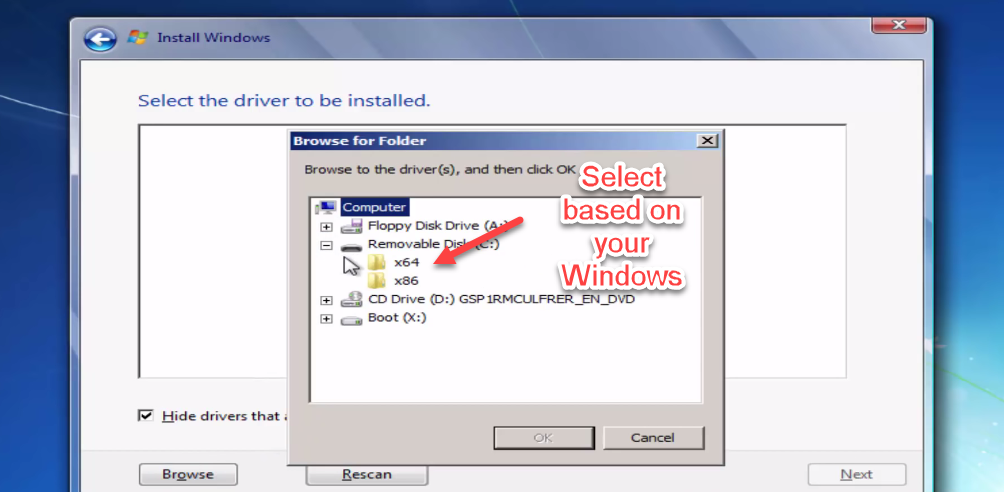
- #Inf file driver how to
- #Inf file driver serial
- #Inf file driver driver
- #Inf file driver software
- #Inf file driver windows
This can be done in safe mode if necessary. To reset all displays, run reset-all.exe and reboot. To reset a display back to the default configuration, use the "Delete" button at the top to delete the override from the registry and reboot.
#Inf file driver windows
Windows Vista/7/8/8.1: right-click on the desktop > Screen resolution > Advanced settings > Monitor tab. Windows 10: right-click on the desktop > Display settings > Advanced display settings > Display adapter properties > Monitor tab. Set the resolution in the Windows display settings. Simply run restart.exe again to enable the driver. #Inf file driver driver
If that happens, the driver might be disabled after rebooting.
On some systems, the graphics driver might crash while restarting. Restart the driver again to reload any changes. This will temporarily unload all the EDID overrides without deleting them. If the display does not return after 15 seconds, press F8 for recovery mode. Run restart.exe to restart the graphics driver. Import follows the same logic unless "Import complete EDID" is selected. #Inf file driver serial
It will not copy the name or serial number, but it will copy the inclusion of these items using the display's own information.
The "Copy" and "Paste" buttons at the top can be used to copy the resolutions, extension blocks, and range limits if included. Repeat steps 2-3 for other displays if required. Please read the sections below for more information. "*" means changes were made and an override was saved in the registry. "(active)" means the display is connected and recognized by the graphics driver. Choose a display from the drop-down list. A UAC prompt may appear because it needs permission to access the registry. Doing this twice should give you recovery options that you can use to get into safe mode: Troubleshoot > Advanced options > Startup Settings > Restart If you don't have a recovery drive, press and hold the power button to shut off the computer while Windows is booting. Older Intel GPUs are supported for external displays only using the alternative method described below.īefore making any changes, familiarize yourself with getting into safe mode using a recovery drive in case you can't see the screen. 4th generation (Haswell) for Windows 7/8.1: Intel Graphics Driver for Windows 7/8.1. 4th/5th generation (Haswell/Broadwell): Intel Graphics Driver for Windows. 6th generation (Skylake): Intel Graphics Driver for Windows. Newer Intel GPUs are supported with the latest drivers. Intel GPUs and laptops with switchable graphics are supported with one of these drivers:. AMD/ATI or NVIDIA GPU with appropriate driver installed (Microsoft Basic Display Adapter driver does not support EDID overrides). Windows Vista or later (Windows XP does not support EDID overrides). #Inf file driver software
If you find my software useful, please consider supporting me through Patreon: I would like to continue providing updates and work on new ideas, but I need your support. Over the years, I have created various monitor-related software and provided support for free. CRU creates software EDID overrides in the registry and does not modify the hardware.ĭownload: cru-1.5.2.zip - Source: cru-1.5.2-src.zip Add custom resolutions, remove unwanted resolutions, edit FreeSync ranges, and more. CRU shows you how the monitor defines resolutions and other capabilities and gives you the power to change it. These files should not be listed in the DefaultUninstall.Services section of the INF file.įor more information about uninstall applications, see Writing a Device Installation Application.Custom Resolution Utility (CRU) is an EDID editor that focuses on custom resolutions.
Some filter driver files cannot safely be removed when the application is uninstalled. 
 An uninstall application should not delete the INF file (or its associated PNF file) from the Windows INF file directory ( %windir%\INF).
An uninstall application should not delete the INF file (or its associated PNF file) from the Windows INF file directory ( %windir%\INF). 
#Inf file driver how to
For more information about how to list your application in Add or Remove Programs, see "Removing an Application" in the Setup and System Administration section of the Microsoft Windows SDK documentation. Only one item should be listed, representing both the application and the driver.
If a user-mode application was installed with the driver, this application should be listed in Add or Remove Programs in Control Panel so that the user can uninstall it if desired. In the DefaultUninstall.Services section of the INF file, the DelService directive should always specify the 0x200 (SPSVCINST_STOPSERVICE) flag to stop the service before it is deleted. To prepare for eventual uninstall, a setup application should copy the driver INF file to an uninstall directory. If you use an application to uninstall your driver, observe the following guidelines: 
InstallHinfSection( NULL, NULL,TEXT( "DefaultUninstall 132 path-to-uninstall-dir\infname.inf "),0)








 0 kommentar(er)
0 kommentar(er)
